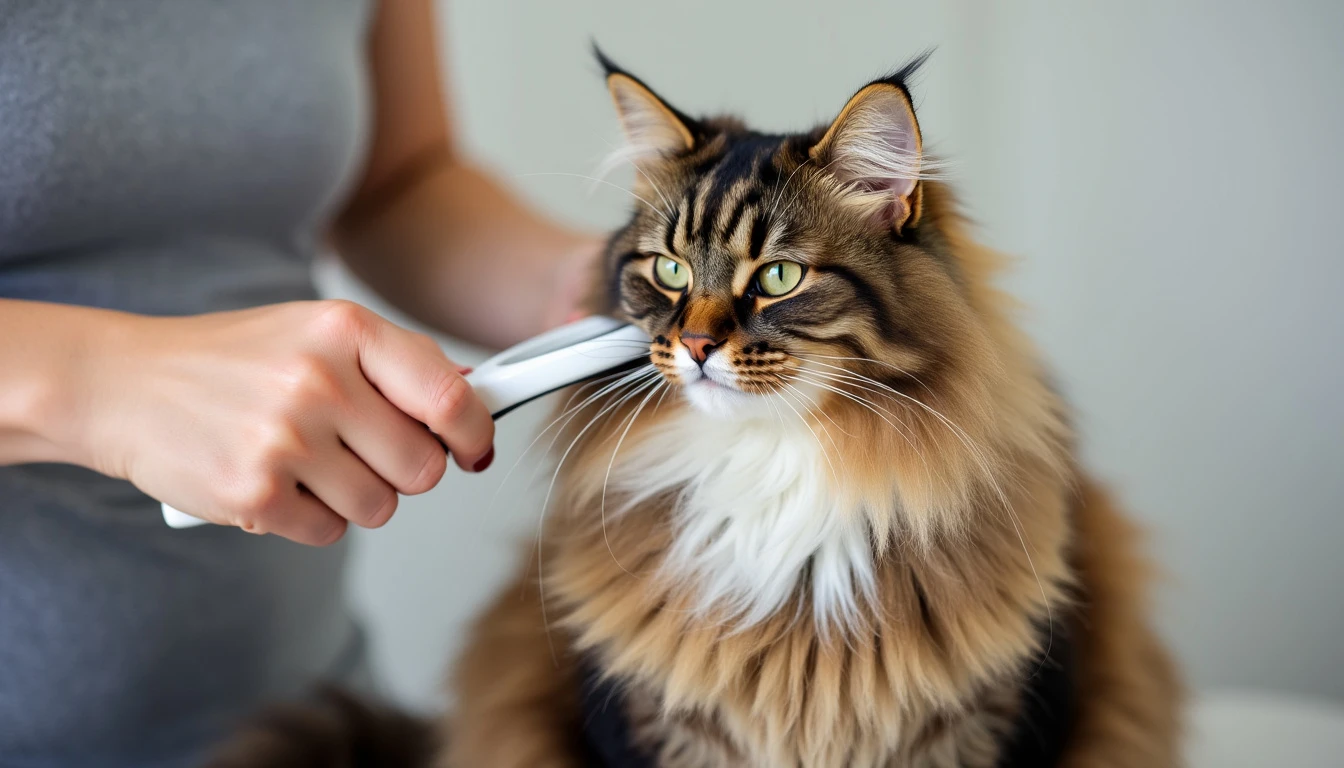Grooming a long-haired cat at home can be a fulfilling yet challenging task. With their stunning coats that cascade like silk, long-haired cats require regular grooming to keep their fur healthy and free from mats and tangles. This comprehensive guide will walk you through everything you need to know about grooming your long-haired feline, from the tools you’ll need to step-by-step techniques, along with tips to make the experience enjoyable for both you and your cat.
Understanding the Needs of Long-Haired Cats

Before diving into grooming techniques, it’s essential to understand the specific needs of long-haired cats. Their beautiful coats can be a double-edged sword. Here are some key points to consider:
Coat Structure
Long-haired cats have hair that grows longer than that of short-haired breeds, making them more prone to matting and tangling. Common long-haired breeds include:
- Persian
- Maine Coon
- Ragdoll
- Norwegian Forest Cat
Grooming Frequency
To maintain a healthy coat, long-haired cats require grooming at least two to three times a week. During shedding seasons, which usually occur in spring and fall, daily grooming is beneficial.
Benefits of Regular Grooming
Regular grooming not only helps keep your cat’s coat looking beautiful but also provides several health benefits:
- Reduces Shedding: Minimizes the amount of fur around your home.
- Prevents Mats: Helps avoid painful tangles that can lead to skin irritation.
- Promotes Bonding: Strengthens your relationship with your cat through gentle handling.
Essential Tools for Grooming Long-Haired Cats
Having the right tools is crucial for effective grooming. Here’s a list of essential grooming tools:
| Tool | Purpose |
|---|---|
| Slicker Brush | Removes loose hair and detangles fur. |
| Wide-Toothed Comb | Helps in detangling and preventing mats. |
| De-shedding Tool | Reduces shedding and prevents hairballs. |
| Scissors | For trimming mats carefully, if necessary. |
| Cat Shampoo | Gentle shampoo for occasional baths. |
| Nail Clippers | To keep claws trimmed and healthy. |
Step-by-Step Guide on How to Groom a Long-Haired Cat at Home
Step 1: Create a Comfortable Environment
Before you begin grooming, it’s important to create a stress-free environment:
- Choose a quiet location: Find a calm space with minimal distractions.
- Use a non-slip surface: A grooming table or a towel on the floor can help your cat feel secure.
Step 2: Start with Brushing
Begin by brushing your cat’s coat:
- Use a slicker brush to gently remove tangles and loose fur. Start at the head and work your way back.
- Be gentle around sensitive areas, like the belly and tail.
- Work in sections to avoid overwhelming your cat, and always brush in the direction of hair growth.
Step 3: Use a Wide-Toothed Comb
After brushing, use a wide-toothed comb to check for any remaining tangles:
- Focus on the undercoat, as mats often form close to the skin.
- For any stubborn tangles, hold the hair near the skin and gently pull apart with your fingers.
Step 4: Detangling Mats
If you encounter mats:
- Do not pull on them, as this can hurt your cat.
- Use a de-shedding tool or a pair of scissors to carefully cut away mats, making sure to avoid the skin.
Step 5: Nail Care
Nail trimming is an essential part of grooming:
- Gently press on the paw pad to extend the claws.
- Use cat nail clippers to trim only the sharp tip, avoiding the quick (the pink part).
Step 6: Bathing (If Necessary)
Long-haired cats typically groom themselves, but a bath may be necessary if they get particularly dirty:
- Use a cat-specific shampoo to avoid skin irritation.
- Wet the cat’s coat thoroughly, avoiding the face.
- Rinse thoroughly to remove all shampoo, as residue can irritate the skin.
Step 7: Final Touches
After grooming, give your cat a gentle rub down with a soft cloth:
- This helps remove any remaining loose hair and adds shine to the coat.
- Always reward your cat with treats or affection to create a positive association with grooming.
Case Study: The Impact of Regular Grooming
A recent study published in the Journal of Feline Medicine and Surgery involving long-haired cat owners revealed that regular grooming reduced the incidence of hairballs by up to 30%. Owners reported that cats were not only healthier but also exhibited less anxiety during grooming sessions after establishing a routine. This reinforces the importance of consistent grooming practices for long-haired cats.
Conclusion and Next Steps
Grooming a long-haired cat at home can be a rewarding experience for both you and your feline friend. By understanding the unique needs of long-haired cats, using the right tools, and following a structured grooming routine, you can ensure your cat’s coat remains beautiful and healthy.
if you have any questions or would like to share your grooming experiences, feel free to leave a comment below! Your insights can help others navigate the joys of grooming long-haired cats. Let’s make grooming a positive experience for everyone!
